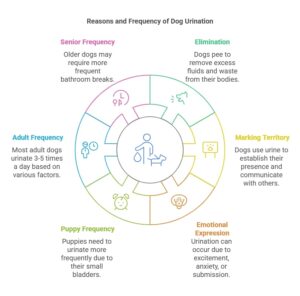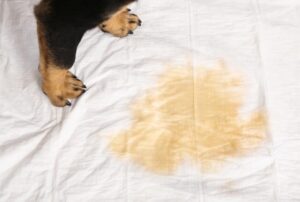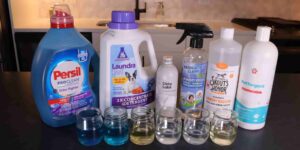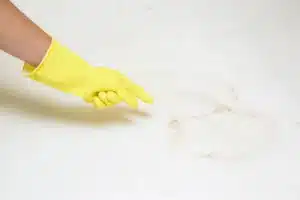If you’re a cat owner, you know that our feline friends bring endless joy, cuddles, and entertainment. But let’s be honest—sometimes they also bring a not-so-pleasant surprise: cat pee smells. Whether it’s due to a litter box mishap, a health issue, or a behavioral quirk, dealing with cat urine odor can be a challenge. But don’t worry! With the right approach, you can eliminate the smell and keep your home fresh and welcoming. Let’s dive into everything you need to know about cleaning cat pee smell effectively.
Table of Contents
ToggleWhy Does Cat Pee Smell So Strong?
Before we tackle the cleaning process, it’s helpful to understand why cat urine smells so potent. Cat pee contains urea, uric acid, and other compounds that create a strong, ammonia-like odor. When the urine dries, the uric acid crystallizes, making it stubborn and difficult to remove. If not cleaned properly, the smell can linger for weeks or even months, and your cat might be tempted to revisit the same spot.
Step-by-Step Guide to Cleaning Cat Pee Smell
1. Act Quickly
The sooner you address the accident, the easier it will be to clean. Fresh urine is much simpler to remove than dried, set-in stains.
2. Blot, Don’t Rub
Grab a clean cloth or paper towels and gently blot the area to absorb as much urine as possible. Avoid rubbing, as this can spread the stain and push the urine deeper into the fabric or carpet.
3. Use an Enzymatic Cleaner
Enzymatic cleaners are your best friend when it comes to eliminating cat pee smell. These cleaners contain enzymes that break down the uric acid crystals, neutralizing the odor at its source. Simply spray the cleaner on the affected area, let it sit for the recommended time (usually 10-15 minutes), and then blot it up.
Pro Tip: Avoid using ammonia-based cleaners, as they can mimic the smell of urine and encourage your cat to pee in the same spot again.
4. For Carpets and Upholstery
If the accident happened on a carpet or couch, after using the enzymatic cleaner, you can sprinkle baking soda over the area to absorb any remaining moisture and odor. Let it sit for a few hours or overnight, then vacuum it up.
5. Hard Surfaces
For hard surfaces like tile or wood, wipe the area with a mixture of warm water and a mild detergent. Follow up with an enzymatic cleaner to ensure the odor is completely gone.
6. Wash Fabrics
If your cat peed on clothing, bedding, or other washable fabrics, rinse the item under cold water, then wash it with an enzymatic detergent or add a cup of white vinegar to the wash cycle to neutralize the odor.
Preventing Future Accidents
Once you’ve tackled the smell, it’s important to address the root cause of the accident to prevent it from happening again. Here are some tips:
- Check the Litter Box: Ensure the litter box is clean, accessible, and in a quiet location. Cats are picky about their bathroom habits!
- Rule Out Health Issues: If your cat is peeing outside the litter box frequently, it could be a sign of a urinary tract infection or other health problem. Consult your vet.
- Use a Pheromone Spray: Products like Feliway can help reduce stress and discourage inappropriate peeing.
- Provide Multiple Litter Boxes: The general rule is one litter box per cat, plus one extra.
FAQs About Cleaning Cat Pee Smell
1. Can I use vinegar to clean cat pee?
Yes! White vinegar is a great natural cleaner that can help neutralize cat urine odor. Mix equal parts vinegar and water, spray it on the affected area, and let it sit for 10-15 minutes before blotting it up.
2. Will baking soda remove cat pee smell?
Baking soda is excellent for absorbing odors. After cleaning the area with an enzymatic cleaner, sprinkle baking soda on the spot, let it sit, and then vacuum it up.
3. Why does my cat keep peeing in the same spot?
Cats are creatures of habit, and the smell of previous accidents can attract them back to the same spot. Thoroughly clean the area with an enzymatic cleaner to remove all traces of odor.
4. Can steam cleaning remove cat pee smell?
Steam cleaning can help, but it’s not always enough to break down the uric acid crystals. For best results, use an enzymatic cleaner before steam cleaning.
5. How do I stop my cat from peeing outside the litter box?
Ensure the litter box is clean, accessible, and in a quiet location. If the behavior continues, consult your vet to rule out medical issues or consider behavioral solutions like pheromone sprays.
6. Is it safe to use bleach on cat pee?
No! Bleach can react with the ammonia in cat urine, creating toxic fumes. Stick to enzymatic cleaners or vinegar-based solutions.
Final Thoughts
Dealing with cat pee smell doesn’t have to be a nightmare. With the right tools and techniques, you can eliminate the odor and keep your home smelling fresh. Remember, patience and consistency are key—and don’t forget to address any underlying issues that might be causing your cat to pee outside the litter box.
Your feline friend is worth the effort, and with these tips, you’ll be able to enjoy a clean, happy home together. Happy cleaning! 🐾
Feel free to share this guide with fellow cat owners who might be struggling with the same issue. And if you have any additional tips or questions, drop them in the comments below!














